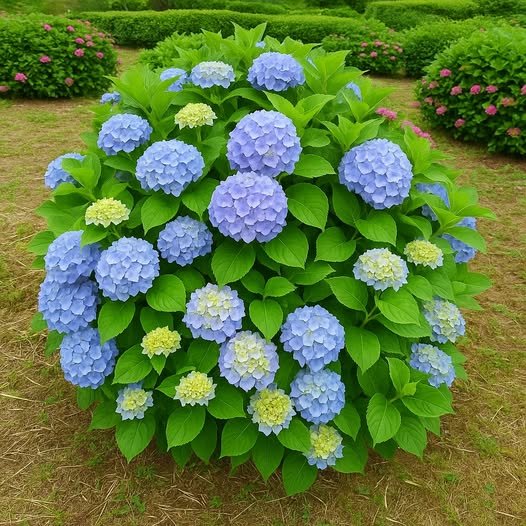Peace lilies are a popular choice for indoor plants, known for their lush green leaves and striking white blooms. However, many plant enthusiasts find themselves frustrated when their peace lilies refuse to bloom. Despite their reputation for being low-maintenance, peace lilies have specific needs that must be met for them to flower.
Understanding the reasons behind a peace lily’s failure to bloom can be the first step toward encouraging those elusive flowers. By examining the plant’s natural habitat, common care mistakes, and the specific conditions required for blooming, you can transform your peace lily from a simple foliage plant into a stunning floral display.
1. Understanding the Natural Habitat of Peace Lilies
Peace lilies (Spathiphyllum spp.) are native to the tropical rainforests of Central and South America. In their natural habitat, they thrive under the canopy of taller trees, where they receive filtered sunlight and enjoy high humidity levels. This environment provides them with consistent warmth and moisture, which are crucial for their growth and blooming.
To mimic these conditions in your home, it’s important to provide a similar environment. This means ensuring that your peace lily receives indirect light, high humidity, and a stable temperature. Understanding these natural preferences can help you create the ideal conditions for your peace lily to bloom.
2. Common Mistakes in Peace Lily Care
One of the most common mistakes in peace lily care is overwatering. Many people assume that because peace lilies are tropical plants, they require constant moisture. However, peace lilies prefer to dry out slightly between waterings. Overwatering can lead to root rot, which can prevent blooming.
Another mistake is placing the plant in direct sunlight. While peace lilies need light to bloom, direct sunlight can scorch their leaves and inhibit flowering. Ensuring that your peace lily is in a spot with indirect light is crucial for its health and bloom production.
3. The Importance of Proper Lighting
Proper lighting is essential for peace lilies to bloom. These plants thrive in bright, indirect light. Direct sunlight can damage their leaves, while too little light can prevent blooming altogether. Ideally, place your peace lily near a north or east-facing window where it can receive filtered light.
If natural light is insufficient, consider using a grow light to supplement. A fluorescent light placed about 12 inches above the plant can provide the necessary light intensity for blooming. Remember, the goal is to mimic the dappled light of a rainforest canopy.
4. Watering: How Much Is Too Much?
Peace lilies prefer to have their soil kept consistently moist but not soggy. Overwatering is a common issue that can lead to root rot, which in turn can prevent blooming. To avoid this, water your peace lily when the top inch of soil feels dry to the touch.
It’s also important to use well-draining soil and a pot with drainage holes to prevent excess water from accumulating. During the winter months, when the plant’s growth slows, reduce watering frequency to prevent overwatering.
5. The Role of Humidity in Blooming
Peace lilies thrive in high humidity environments, similar to their native tropical habitats. Low humidity can cause the leaves to brown at the edges and may inhibit blooming. To increase humidity, consider placing a humidifier near the plant or setting the pot on a tray filled with pebbles and water.
Misting the leaves regularly can also help maintain humidity levels. Aim for a humidity level of around 50-60% to keep your peace lily healthy and encourage blooming.
6. Soil and Potting: Getting It Right
The right soil mix is crucial for peace lilies. They prefer a well-draining, peat-based potting mix that retains moisture without becoming waterlogged. A mix of peat moss, perlite, and pine bark can provide the ideal balance of drainage and moisture retention.
Repotting your peace lily every 1-2 years can also promote blooming by providing fresh nutrients and more room for root growth. Choose a pot that is only slightly larger than the current one to prevent excessive soil moisture.
7. Fertilization: When and How to Feed Your Plant
Fertilizing your peace lily can encourage blooming by providing essential nutrients. Use a balanced, water-soluble fertilizer diluted to half strength every 6-8 weeks during the growing season (spring and summer).
Avoid over-fertilizing, as this can lead to salt buildup in the soil, which can harm the plant. In the fall and winter, reduce fertilization to once every 10-12 weeks, as the plant’s growth slows down.
8. Temperature: Keeping It Consistent
Peace lilies prefer a consistent temperature range between 65-85°F (18-29°C). Sudden temperature fluctuations or exposure to cold drafts can stress the plant and inhibit blooming.
Keep your peace lily away from windows or doors that may expose it to cold air, and avoid placing it near heating vents that can cause temperature spikes. Maintaining a stable environment will help your peace lily thrive and bloom.
9. Pruning and Maintenance for Optimal Growth
Regular pruning can encourage new growth and blooming in peace lilies. Remove any yellowing or dead leaves to allow the plant to focus its energy on healthy growth.
After a bloom has faded, cut the flower stalk back to the base of the plant. This not only improves the plant’s appearance but also encourages the production of new blooms.
10. Popular Viral Hacks: Do They Really Work?
There are many viral hacks for encouraging peace lily blooms, such as using banana peels or coffee grounds as fertilizer. While these methods can provide some nutrients, they are not a substitute for a balanced fertilizer and proper care.
It’s important to approach viral hacks with caution and rely on proven care techniques to ensure your peace lily’s health and blooming potential.
11. Troubleshooting: Identifying and Solving Blooming Problems
If your peace lily isn’t blooming, start by reviewing its care routine. Check for signs of overwatering, insufficient light, or low humidity. Adjusting these factors can often resolve blooming issues.
If problems persist, consider repotting the plant to refresh the soil and inspect the roots for signs of rot. Ensuring that all aspects of care are optimized will increase the likelihood of your peace lily blooming.



